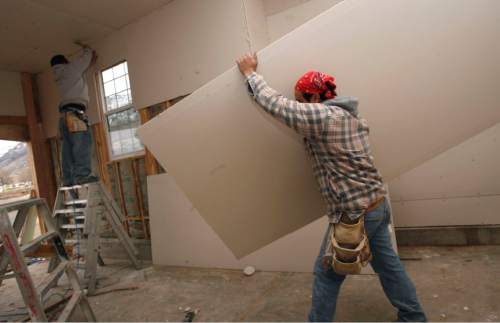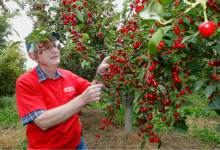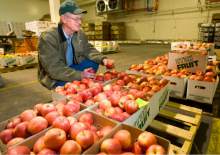This is an archived article that was published on sltrib.com in 2015, and information in the article may be outdated. It is provided only for personal research purposes and may not be reprinted.
A new study says that nearly one of every three farmworkers in Utah is an undocumented immigrant. So is one of every six construction workers.
The Pew Research Center released a study Thursday that uses U.S. census and other government data to examine labor trends among undocumented workers nationally. It included a variety of state-by-state information.
It estimates that 31 percent of the farmworkers in Utah in 2012 were undocumented immigrants, as were 17 percent of all construction workers.
Randy Parker, CEO of the Utah Farm Bureau Federation, says the numbers are surprising at first, but may be close to accurate the more he considers them.
Many small farms do not have the ability to use the federal E-verify system to check immigration status of applicants, he said. Many farmworkers seeking a job present some form of identification making them appear legal, and farmers worry that privacy laws may prohibit them from challenging them too much.
In addition, Parker said, the harvest creates such a high demand for labor everywhere at the same time that farmers hire migrant crews, which in turn may have undocumented workers.
Robert McMullin, a partner in McMullin Orchards in Payson, says his farm uses immigrant workers, but they are here legally through the H-2A temporary-worker visa program.
Still, he said, without immigrants, most Utah farms could not operate. "It is very difficult to get help" to do the hard, lower-paying farm work that many residents refuse — especially when unemployment rates are low and other work is available.
McMullin said his orchard was forced to leave many sweet cherries on trees in 2013 because it couldn't find enough people to harvest the fruit in time, and some of it simply grew too old.
"It happened again last year, and will happen again this year," he lamented.
"We're trying to get more H-2A workers," he said. "It's very difficult. It's expensive. It is a lot of bureaucracy and paperwork. We're learning better how to do it."
Parker said farm and ranch work is so hard that he knows one sheep rancher who advertises annually for herders, "and he has never had one U.S. resident apply — not one."
Dale Cox, president of the Utah AFL-CIO labor union, said he believes the estimates for construction workers are close to accurate. He said that causes concern because many such workers often are exploited by unscrupulous employers.
"They pay them a great deal less than market value," Cox said. "And they have them over a barrel because they are undocumented" and can't complain for fear of deportation.
They "are not being paid overtime; some of them are not getting workers' compensation" when injured, Cox said. "It's kind of like indentured servitude."
He adds such practices make it tough for good "contractors that are working hard and trying to play by the rules. It hurts our tax base. It hurts everything."
The Pew study estimated that in 2012, undocumented immigrants accounted for 3.6 percent of Utah's population and 5.1 percent of its workforce.
It estimates about 100,000 unauthorized immigrants lived in Utah that year, and 70,000 of them were in the labor force.
The study said 34 percent of those undocumented workers are in the services industry, with such jobs as maids, cooks or landscapers, making it the most popular industry for them.
It said 20 percent work in construction, and 15 percent work in production occupations.
Nationally, "The size of the unauthorized immigrant labor force did not change from 2007 to 2012, but its makeup shifted slightly," the study said.
More immigrants were in management or professional jobs, and fewer were in blue-collar work, it found. "Despite these shifts, unauthorized immigrant workers remain concentrated in lower-skill jobs, much more so than U.S.-born workers."
The study added, "The relative stability of the size of the unauthorized immigrant labor force since 2007 contrasts with a marked decline in the overall U.S. unauthorized immigrant population, which peaked at 12.2 million in 2007, dropped through 2009 and stabilized after that, to total 11.2 million in 2012."







